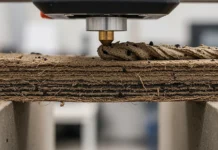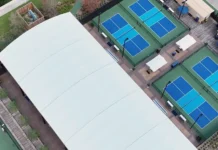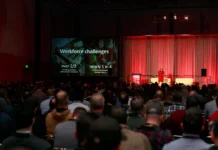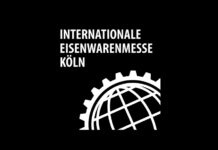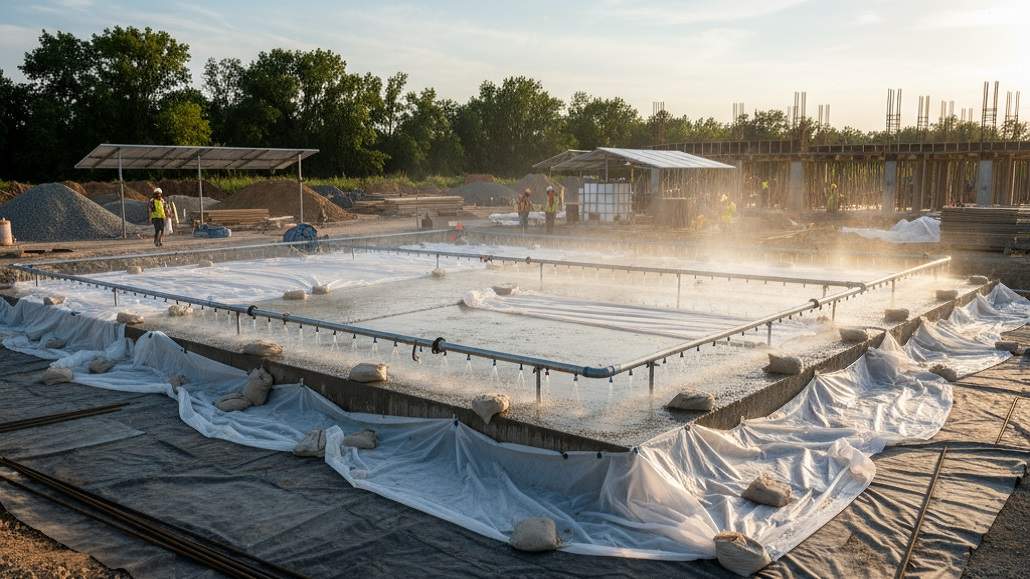Water consumption in concrete construction represents a critical sustainability challenge as global water scarcity intensifies while construction demand continues expanding across water-stressed regions worldwide. Traditional concrete curing practices typically require substantial water quantities for proper hydration, temperature control, and strength development, often consuming 15-20% of total project water usage while presenting logistical challenges in remote or arid construction environments. Water saving concrete curing technologies represent innovative solutions that maintain or enhance concrete performance while dramatically reducing water consumption through advanced curing techniques, chemical additives, and intelligent application systems.
Contemporary water conservation imperatives extend beyond simple usage reduction to encompass comprehensive resource management strategies that address water quality, recycling potential, and environmental impact throughout construction lifecycles. Advanced curing technologies enable high-performance concrete production in water-limited environments while often improving final concrete properties through more controlled and efficient hydration processes.
The development of water-efficient curing systems addresses multiple construction industry needs including environmental compliance, cost reduction, and enhanced project feasibility in challenging environments. These technologies enable construction projects to proceed in locations where traditional water-intensive curing methods would be impractical or environmentally unacceptable while delivering superior concrete performance characteristics.
Revolutionary Concrete Curing Technologies
Modern concrete curing approaches encompass multiple technologies that optimize water utilization while ensuring proper hydration and strength development. Self-curing concrete technologies incorporate internal water storage systems through lightweight aggregates, superabsorbent polymers, or phase-change materials that release water gradually during the hydration process, eliminating the need for external water application during curing.
Advanced chemical curing compounds create protective films on concrete surfaces that prevent moisture loss while allowing continued hydration using the water already present in the concrete mixture. These compounds can reduce water consumption for curing by 80-90% while often improving surface quality and reducing shrinkage cracking compared to traditional water curing methods.
Steam curing systems utilize controlled humidity and temperature environments to accelerate concrete hydration while minimizing water consumption through closed-loop systems that capture and recycle water vapor. These systems can achieve target strength in significantly reduced timeframes while consuming minimal fresh water through efficient vapor recovery systems.
Membrane curing technologies utilize impermeable barriers that retain concrete moisture while protecting against environmental conditions that could compromise hydration. Advanced membrane materials can provide superior moisture retention while being lighter, more durable, and easier to apply than traditional alternatives.
Water Conservation Implementation Strategies
Comprehensive water conservation strategies integrate multiple approaches that address water usage throughout concrete production and curing cycles. Water recycling systems capture and treat wash water, process water, and curing water for reuse in subsequent concrete production or curing operations, dramatically reducing fresh water consumption while maintaining quality standards.
Closed-loop curing systems circulate water through curing chambers or surface applications while continuously monitoring and adjusting water quality, temperature, and chemical composition. These systems can maintain optimal curing conditions while consuming 70-80% less water than traditional methods through intelligent water management and recycling processes.
Intelligent irrigation systems for concrete curing utilize sensors, weather data, and hydration models to optimize water application timing and quantities. These systems can adjust water delivery based on concrete temperature, ambient conditions, and hydration progress, ensuring adequate curing while minimizing water waste through precise application control.
Quality monitoring systems track concrete properties, environmental conditions, and water consumption to optimize curing strategies continuously. Advanced monitoring can identify opportunities for water reduction while ensuring that concrete performance meets or exceeds specified requirements through data-driven optimization approaches.
Sustainable Construction Water Management
Holistic water management approaches coordinate concrete curing with other construction water uses to maximize overall efficiency and resource conservation. Integrated water systems can utilize treated wastewater, collected rainwater, and recycled process water for concrete curing while maintaining quality standards through appropriate treatment and monitoring systems.
Rainwater harvesting systems specifically designed for construction applications can provide substantial water resources for concrete curing while reducing dependence on municipal water supplies. These systems incorporate storage, treatment, and distribution capabilities that ensure water quality while providing reliable supply for curing operations.
Greywater utilization systems treat and process wastewater from construction activities for use in concrete curing applications. Advanced treatment systems can remove contaminants that could affect concrete performance while providing substantial water conservation benefits and reducing wastewater disposal requirements.
Water quality management systems ensure that alternative water sources meet requirements for concrete curing while monitoring for contaminants that could compromise performance. These systems can optimize water treatment processes while providing quality assurance that maintains concrete durability and strength characteristics.
Advanced Curing Systems and Equipment
Automated curing systems integrate sensors, controls, and water delivery mechanisms to optimize curing processes while minimizing water consumption and labor requirements. These systems can monitor concrete conditions continuously while adjusting water application rates, timing, and distribution patterns to maintain optimal curing conditions with minimal resource consumption.
Fogging and misting systems provide precise water application that maintains surface moisture while minimizing water consumption through controlled droplet size and distribution patterns. Advanced nozzle designs and control systems can deliver water exactly where needed while preventing waste through runoff or evaporation.
Enclosure systems create controlled environments for concrete curing that enable precise humidity and temperature control while minimizing water loss to the surrounding environment. These systems can maintain optimal curing conditions while recycling water vapor and minimizing fresh water requirements through efficient environmental control.
Mobile curing systems provide water-efficient concrete curing capabilities for remote or challenging construction sites where traditional water supply and curing methods would be impractical. These systems integrate water storage, treatment, and application capabilities in transportable units that can support construction projects in water-limited environments.
Eco-Efficiency and Performance Optimization
Eco-efficiency optimization balances water conservation objectives with concrete performance requirements to achieve optimal outcomes that satisfy both environmental and structural objectives. Advanced admixture systems can reduce water requirements for concrete mixing while enhancing curing efficiency, creating synergistic effects that improve both sustainability and performance characteristics.
Performance validation systems ensure that water-saving curing technologies deliver concrete properties that meet or exceed traditional curing methods while providing quantified environmental benefits. Comprehensive testing protocols verify strength development, durability characteristics, and long-term performance under various environmental conditions.
Lifecycle assessment approaches evaluate the comprehensive environmental impact of water-saving curing technologies including water consumption, energy usage, material requirements, and long-term performance implications. These assessments provide objective comparisons between different curing approaches while supporting decision-making for sustainable construction practices.
Economic analysis demonstrates that water-saving curing technologies often provide cost advantages through reduced water costs, improved construction efficiency, and enhanced concrete performance. Comprehensive economic models consider capital investments, operational savings, and long-term benefits to provide accurate assessments of technology value.
Chemical Additives and Enhancement Systems
Advanced chemical systems enhance water efficiency in concrete curing through multiple mechanisms including hydration optimization, moisture retention, and performance enhancement. Crystalline admixtures create self-sealing capabilities that reduce water permeability while enhancing long-term durability through continued hydration of unhydrated cement particles.
Internal curing agents including superabsorbent polymers and lightweight aggregates provide controlled water release during hydration while reducing external water requirements. These systems can improve concrete performance while eliminating the need for external curing water application in many applications.
Shrinkage-reducing admixtures minimize concrete cracking while reducing water requirements for curing through improved dimensional stability and reduced moisture sensitivity. These chemical systems can enhance concrete durability while supporting water conservation objectives through reduced maintenance and repair requirements.
Accelerating admixtures enable faster strength development that can reduce curing duration and water consumption while maintaining final concrete properties. These chemical systems can optimize construction schedules while reducing resource requirements through shorter curing periods and improved efficiency.
Technology Integration and Future Development
Digital integration systems coordinate water-saving curing technologies with project management, quality control, and environmental monitoring systems to optimize overall construction performance. Internet of Things sensors can monitor concrete conditions, water usage, and environmental factors while providing real-time feedback for curing optimization.
Artificial intelligence applications analyze curing performance data to identify optimization opportunities and predict optimal curing strategies for different concrete mixtures and environmental conditions. Machine learning algorithms can continuously improve curing efficiency while maintaining quality standards through data-driven optimization approaches.
Nanotechnology applications in concrete curing include nano-scale additives that enhance hydration efficiency while reducing water requirements. These advanced materials can improve concrete performance while supporting sustainability objectives through reduced resource consumption and enhanced durability.
Biotechnology approaches including bacterial and enzymatic systems can enhance concrete curing processes while reducing water requirements through biological optimization of hydration reactions. These emerging technologies offer potential for significant improvements in both performance and sustainability characteristics.
Regulatory Compliance and Standards
Water conservation regulations increasingly influence concrete curing practices while creating incentives for adoption of water-saving technologies. Regulatory frameworks often provide benefits for construction projects that demonstrate water conservation while maintaining performance standards through advanced curing technologies.
Industry standards development addresses water-saving curing technologies while providing guidance for implementation, testing, and performance validation. These standards support technology adoption while ensuring that water conservation measures maintain concrete quality and durability characteristics.
Environmental certification programs recognize construction projects that implement water-saving technologies while providing market incentives for sustainable construction practices. Green building standards increasingly incorporate water conservation requirements that favor advanced curing technologies over traditional approaches.
Quality assurance protocols ensure that water-saving curing technologies comply with applicable standards while providing documentation for regulatory compliance and performance verification. These protocols support technology adoption while maintaining confidence in concrete quality and long-term performance.
Conclusion
Water-saving technologies in concrete curing represent essential innovations that address growing water scarcity concerns while maintaining or enhancing concrete performance characteristics. Through advanced curing techniques, intelligent application systems, and comprehensive water management strategies, these technologies enable sustainable construction practices that reduce environmental impact while delivering superior concrete quality.
The successful implementation of water-saving curing technologies requires integration of chemical systems, equipment technologies, and management approaches supported by appropriate training and quality control protocols. As these technologies continue demonstrating their effectiveness and environmental benefits, their adoption will accelerate across construction markets facing water constraints.
The future of concrete curing lies in intelligent systems that optimize water utilization while enhancing concrete performance through precise control of hydration processes and environmental conditions. Water-saving curing technologies will play increasingly important roles in enabling sustainable construction practices while meeting growing infrastructure demands in water-stressed regions worldwide.




